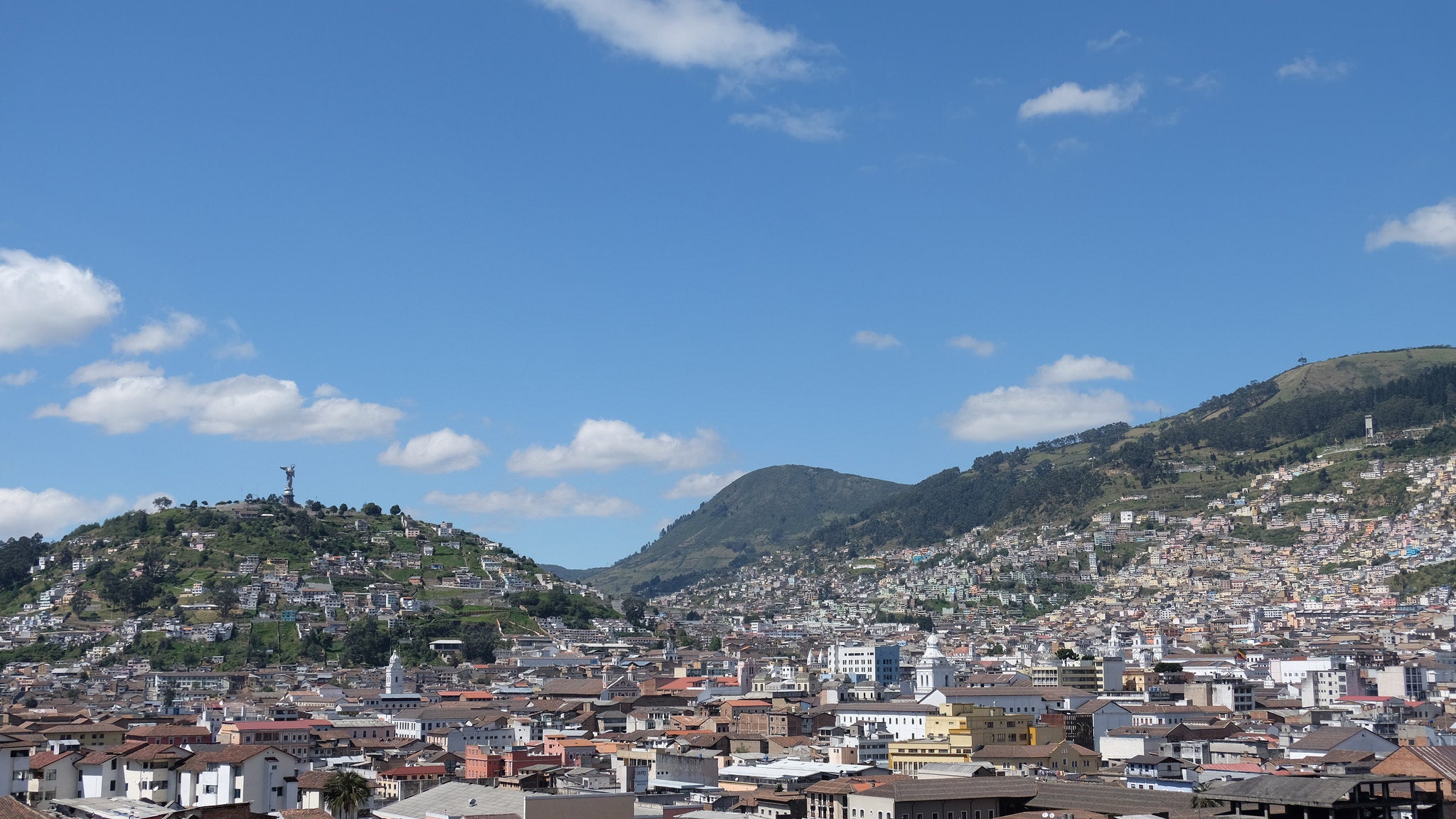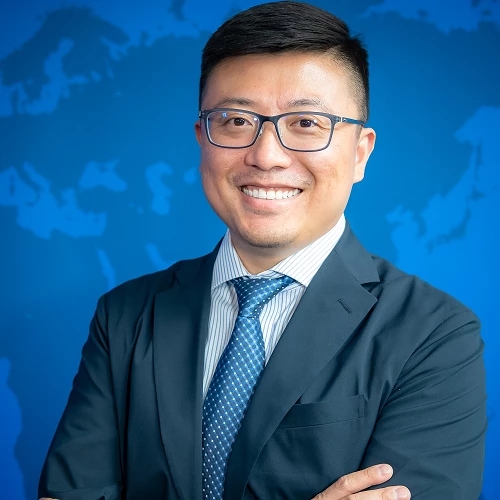[Put together the puzzle pieces to reveal the picture. Scroll down to #9 for hints.]
If the world in 2017 were a jigsaw puzzle, what memorable pieces would you choose to make up the big picture?
Hurricanes Harvey, Irma, and Maria that pounded coastal United States and the Caribbean; the severe drought that struck Somalia; forest fires that are ravaging through southern California… Hard to miss were the natural disasters that displaced – even killed – individuals and families.
There were also the “manmade” disasters – conflicts that erupted or lasted in many parts of the world continued to force men, women, and children out of their homes and homelands.
Yet, turning to the bright side, the world has come a long way this year in addressing these challenges to boost inclusive and sustainable growth.
Just a couple of weeks ago, for example, global and local leaders gathered at the One Planet Summit in Paris to firm up their commitment – and ramp up action – to maximize climate finance for a low-carbon, disaster-resilient future.
At the World Bank, our teams working on social development, urban development, disaster risk management, and land issues have endeavored with countries and cities worldwide throughout the year to achieve a common goal: building inclusive, resilient, and sustainable cities and communities for all.
How did they do? From our “Sustainable Communities” newsletter, we have captured 12 moments that mark the major accomplishments and lessons learned in 2017—and inspire our continued work to end extreme poverty and boost shared prosperity in 2018:
#1: Africa’s Cities: Opening Doors to the World
Released in February 2017, our report on cities in Africa notes that, to grow economically as they are growing in size, Africa’s cities must open their doors and connect to the world. Improving conditions for people and businesses in African cities is the key to accelerating economic growth, adding jobs, and improving city competitiveness. Two more reports released in 2017 also shined a light on inclusive urban growth in East Asia and the Pacific and in Europe and Central Asia respectively.
#2: Hydromet: Investing in better weather services to save lives
Hydromet – hydrological and meteorological – hazards are responsible for 90% of total disaster losses worldwide. As we celebrated World Meteorological Day on March 23, we reflected on how the World Bank worked with partners such as the Global Facility for Disaster Reduction and Recovery (GFDRR) and the World Meteorological Organization (WMO) to improve hydromet services in developing countries in Africa and elsewhere – and build their resilience to their economic, environmental, and social challenges.
#3: Why land matters for poverty reduction
Only 30% of the world’s population has a legally registered title to their land. As discussed at the Land and Poverty Conference in March 2017, secure land rights are important for reducing poverty and boosting shared prosperity at the country, community, and family levels. Learn how the World Bank supports countries to secure land rights for their populations, especially women, Indigenous Peoples, and other vulnerable groups. The next Land and Poverty Conference will take place at the World Bank in March 2018 with the theme of “land governance in an interconnected world.”
#4: Cities, where the future is being built
At the World Bank-IMF Spring Meetings in April 2017, thought leaders, national and city policymakers, and civil society leaders engaged in a live discussion to highlight the role of cities and metropolitan regions in being vanguards for inclusive and sustainable economic growth. Replay the event, and learn more about the three key roles cities play in building an inclusive, resilient, productive, and sustainable future for all.
#5: Why SOGI and LGBTI matter
On May 17, International Day Against Homophobia, Transphobia and Biphobia (IDAHOT), we learned three things about sexual orientation and gender identity (SOGI), as well as why and how our work on LGBTI data matters for the people and the economy in developing countries around the world.
#6: The road to refuge
On World Refugee Day (June 20), the UN High Commissioner for Refugees (UNHCR) announced that there were 22.5 million refugees and 40.3 million displaced internally due to conflicts by the end of 2016, as well as many more forced to move due to natural disasters. Watch our video blog and learn how the forced displacement crisis affects the displaced and their host communities around the world.
#7: Indigenous Peoples
Worldwide, there are about 370 million Indigenous Peoples and ethnic minorities living in more than 90 countries. They make up only 5% of the global population, but account for about 15% of the extreme poor. On August 9, International Day of the World’s Indigenous Peoples, we discussed – through a video blog and a Facebook Live – the challenges Indigenous Peoples faced and the progress made in the past 10 years in tackling them.
#8: International Day for Disaster Reduction
As we observed the International Day for Disaster Reduction on October 13, the world continued to undergo intensified and more frequent natural disasters. What can we do? Our work on disaster risk management tells us that secure land rights are key to reducing vulnerability and disaster risks. Resilient infrastructure is also crucial – replay a livestreamed discussion on this topic with Richard Branson, Christiana Figueres, and other influencers in October 2017.Secure #landrights for all => Key to building disaster-resilient communities. Watch: https://t.co/SlyalH1ucP #IDDR2017 #land2030 pic.twitter.com/MwmdsgQ0nT
— World Bank Cities (@WBG_Cities) October 13, 2017
#9: Winning photos capture the future of sustainable cities

On World Cities Day (October 31), we revealed the winners and finalists of our Sustainable Cities Photo Competition on the sidelines of the Second Annual Meeting of the Global Platform for Sustainable Cities (GPSC). Take a look at the winning photos, which visually speak to the urgent need for resilient infrastructure and a need to aspire to greener ideals of building sustainable communities for all in many parts of the world.
#10: Technology and civic engagement: new approaches
Discussions on #CivicTech took center stage at the World Bank-IMF Annual Meetings in October 2017. We brought together innovators from civil society and government to explore the potential use of frontier technologies in citizen engagement and social inclusion – to ultimately improve policymaking and service delivery. Replay the event.
#11: Getting to work on disability inclusion
At the Harkin International Disability Employment Summit in November 2017, World Bank Group President Jim Kim said: “Disability should not mean exclusion. Everyone deserves an opportunity for a better life.” Learn more about our work throughout the years to promote disability inclusion in education, employment, urban development, disaster risk management, and other areas of global development.
#12: There is no Planet B.
From the COP23 hosted by Fiji in Bonn, Germany in November to the One Planet Summit in Paris in December, we highlighted some of the transformational progresses in key climate action areas including urban resilience and hydromet, and announced new initiatives – such as the partnership with the Global Covenant of Mayors and the launch of the Caribbean Coalition – that will contribute to the global efforts to build a more resilient urban future. Watch our video blog to learn more.Preparing cities for disasters and climate risks is key to development and poverty reduction efforts. Learn more about the @WorldBank’s work in #urbanresilience: https://t.co/20iX0yZMI9 #OnePlanet pic.twitter.com/90RjsortU3
— World Bank Climate (@WBG_Climate) December 18, 2017
What challenges and progresses will 2018 bring for building inclusive, resilient, and sustainable cities and communities for all? Subscribe to our “Sustainable Communities” newsletter and follow @WBG_Cities to stay updated!






Join the Conversation